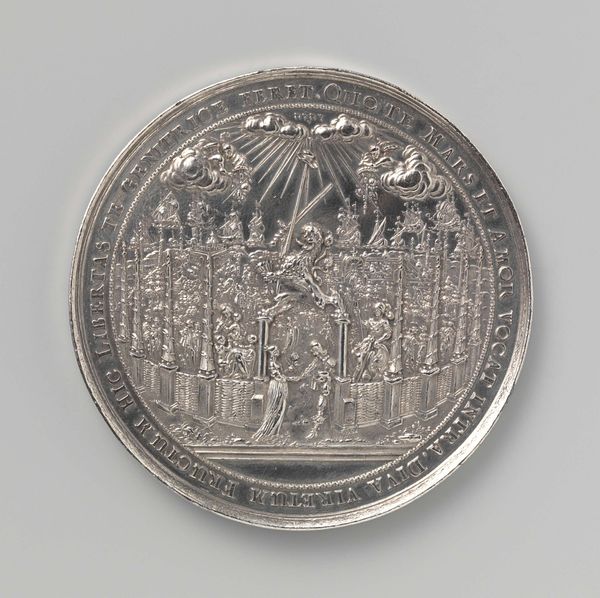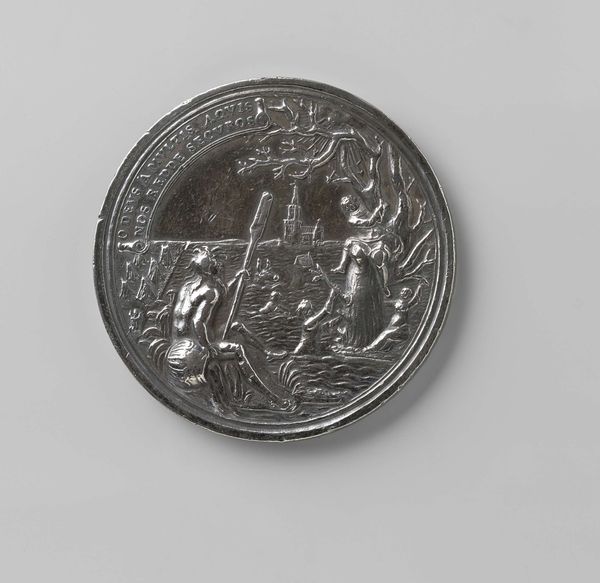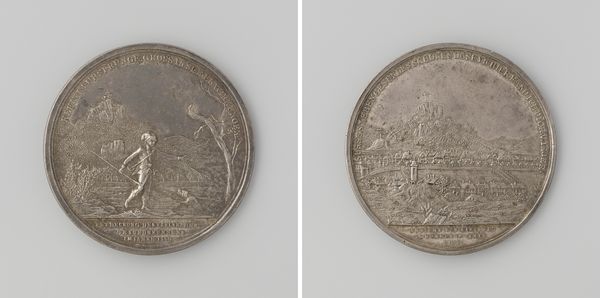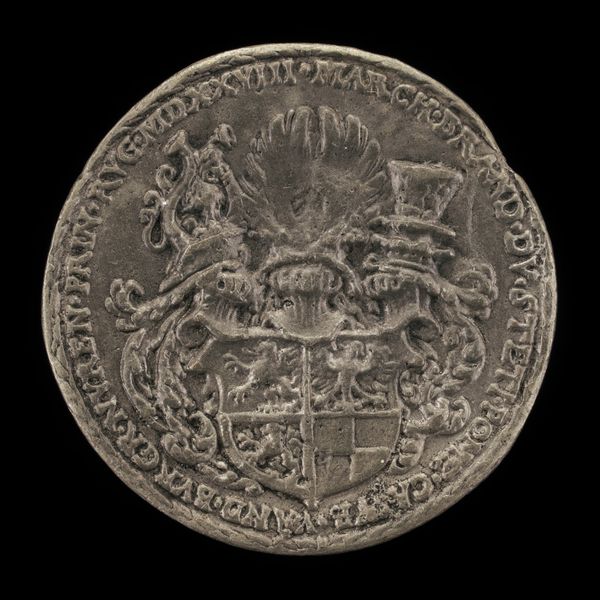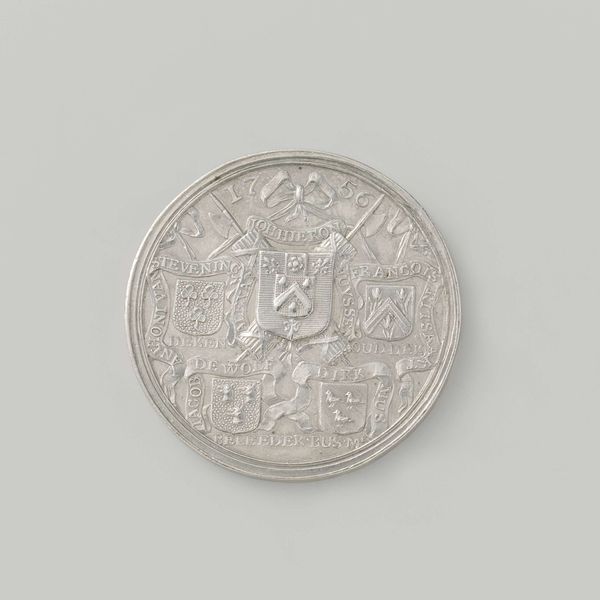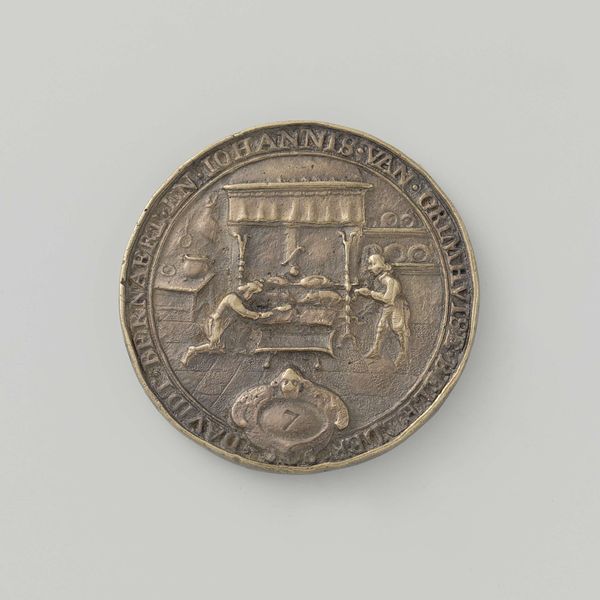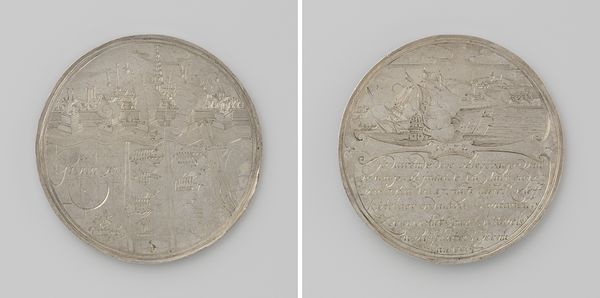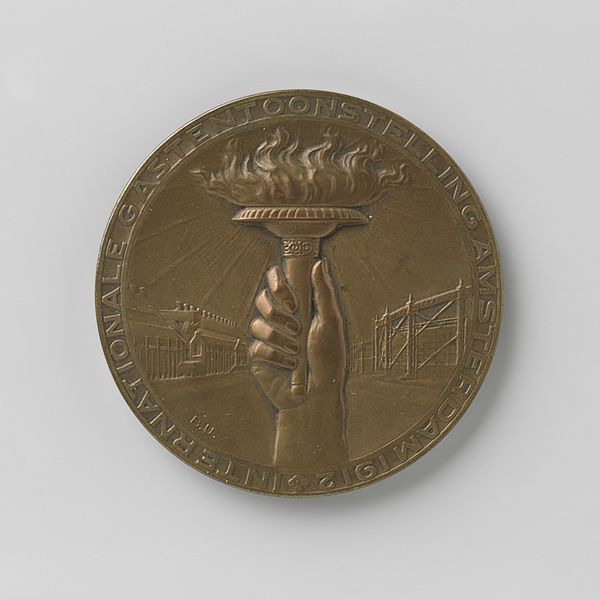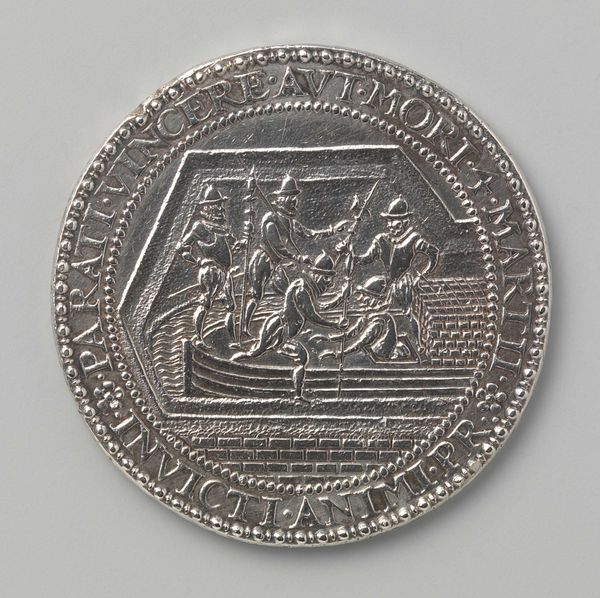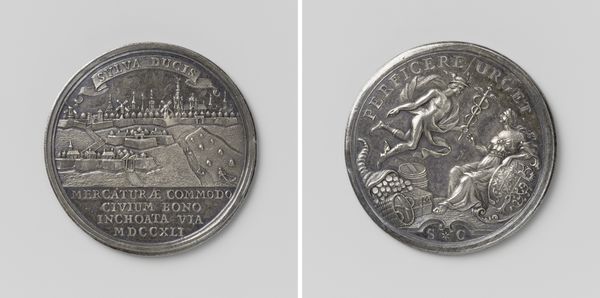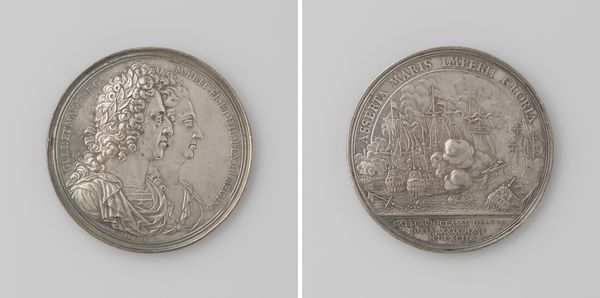
Overwinning bij Turnhout en het innemen van negen steden in drie maanden 1597
0:00
0:00
print, metal, engraving
#
narrative-art
# print
#
metal
#
form
#
11_renaissance
#
geometric
#
line
#
history-painting
#
northern-renaissance
#
engraving
Dimensions: diameter 5.2 cm, weight 44.44 gr
Copyright: Rijks Museum: Open Domain
Curator: This silver engraving from 1597 by Gerard van Bylaer is titled "Victory at Turnhout and the capture of nine cities in three months". What strikes you about it? Editor: My first impression is one of meticulous detail. It's like a complex puzzle etched in silver, demanding close inspection to unravel its narrative. It feels authoritative. Curator: Precisely. It commemorates a pivotal moment during the Dutch Revolt, celebrating the military successes under Prince Maurice of Nassau. The imagery isn't just decorative, but loaded with political symbolism. Editor: The central figure looks almost like an armored deity. Can you unpack some of that symbolism for me? I'm wondering how those images of Turnhout work to transmit shared memories and cement political legitimacy in the Netherlands. Curator: Look closer—that central figure is a complex arrangement incorporating the arms of the Dutch Republic alongside military banners and weapons. Surrounding this are miniature cityscapes, representing the captured cities. These aren’t just geographical markers; they signify dominance. They speak to a collective Dutch identity solidifying in that era of upheaval and war. It reminds me that history painting isn't all portraits. Maps can serve that same function to commemorate. Editor: Yes, I'm seeing the cartographic element more clearly now. It's fascinating how it uses spatial representation not merely for geographic accuracy but as a tool of power, literally encircling the symbols of Dutch military might. The style aligns so perfectly with other Northern Renaissance works; this love of ornate detail that can read like a visual encyclopaedia. But there's a clear propagandistic purpose to this art object. Who was the audience meant to consume this commemorative victory message? Curator: The intended audience would have likely been members of the Dutch elite, those invested in the political and economic success of the newly formed Republic. These would have been commemorative medals, possibly distributed amongst the key players in these events. Editor: Knowing that this was made for an elite audience, its display within the intimate context of a coin takes on new weight, emphasizing their personal stake in and access to narratives of nation building. Curator: Exactly, and the use of geometric forms alongside recognizable scenes serves to elevate this beyond a simple depiction of events, transforming it into a lasting emblem of national pride and burgeoning power. Editor: So much embedded in such a small format; food for thought. Curator: Indeed; these artifacts serve as a visual reminder that national identity is often forged in the crucible of conflict and commemorated in meticulously crafted symbols.
Comments
No comments
Be the first to comment and join the conversation on the ultimate creative platform.
